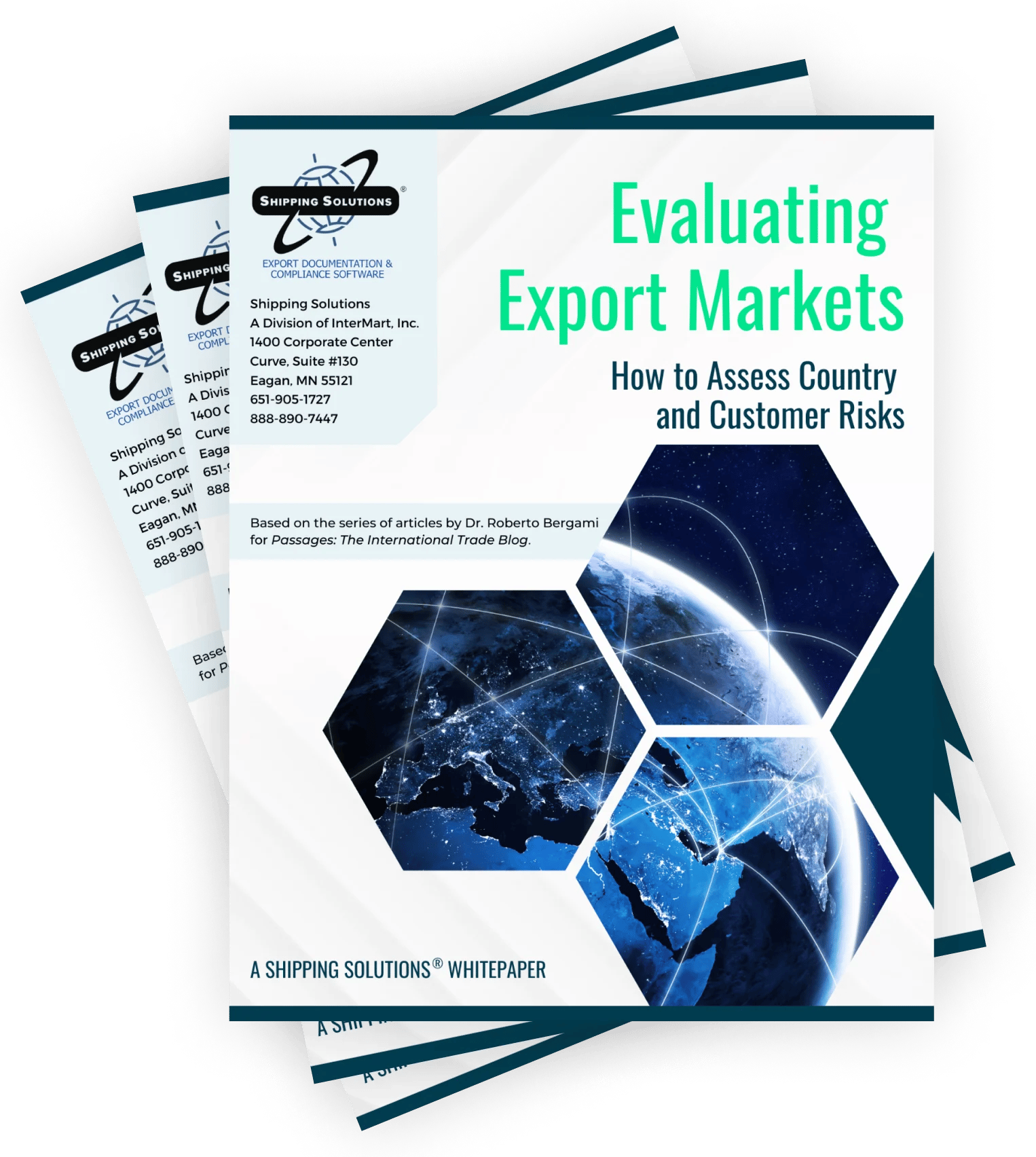The International Trade Blog International Logistics
Navigating Supply Chain Audits: Guidelines for Exporters and Importers
On: January 8, 2024 | By:  Mitch Kostoulakos |
6 min. read
Mitch Kostoulakos |
6 min. read
 The years since the beginning of the COVID-19 pandemic have raised awareness about supply chains and logistics services as shortages and delays became the norm. C-suite executives added supply chain resiliency and risk to their list of priorities. For supply chain managers, the positive outcome of the disruptions is a heightened profile of their profession. The need for annual audits of supply chains to help mitigate future disruptions is obvious, but execution can be difficult.
The years since the beginning of the COVID-19 pandemic have raised awareness about supply chains and logistics services as shortages and delays became the norm. C-suite executives added supply chain resiliency and risk to their list of priorities. For supply chain managers, the positive outcome of the disruptions is a heightened profile of their profession. The need for annual audits of supply chains to help mitigate future disruptions is obvious, but execution can be difficult.
Audits sometimes become a back-burner issue or are postponed in favor of other projects. There is no regulatory requirement to perform supply chain audits, so there are many reasons companies put them off:
- Staffing.
- Unwillingness to devote resources and money.
- The belief that the company is too small.
- Lack of C-level commitment. (If supply chain audits are to be performed and effective, C-level leadership is the most critical factor.)
Supply chain software and checklists can be used to produce an off-the-shelf audit. However, a customized process will be more effective as an analytical, planning and training tool. Supply chains vary from simple to complex depending on many factors, including locations and distances between sources and markets, the country of origin of components, logistics service providers, and regulatory issues.
This article is intended to present a suggested set of guidelines for developing customized audits rather than a checklist of numbered tasks. Strategic goals are the purview of C-level executives (the long-term, broad goals they hope to achieve), providing tactical direction to supply chain auditors (short-term actions that should be taken to achieve those long-term goals).
Strategic Level: Long-Term Goals to Consider in a Supply Chain Audit
Supply Chain Strategy
An audit will consider strategies to ensure that the company has a clear vision that is aligned with its business goals. The strategy should be inclusive of the people, processes and systems involved in order to meet customer-service requirements. Transparency must be implemented at the strategic level, enabling better communication throughout the entire supply chain. Furthermore, a good strategy will examine social responsibility, quality, sustainability, environmental concerns and responsible sourcing.
HR Implications
An audit will analyze the supply chain to determine if an effective organizational structure is in place. A suitable structure has clear accountabilities outlined and suitable resources available to facilitate a company and its partners in meeting their goals. An effective structure will also ensure that the workforce has suitable training and that the workplace culture supports continual improvement.
Supply Chain Processes
An audit will examine tactical functions of the supply chain: inventory management, technology tools or software, procurement, logistics and customer service. KPIs are to be implemented for tactical functions and updated as needed.
Vendor Management
An audit will ensure that vendors are complying with relevant regulations and identify instances of noncompliance and potential red flags. In addition, the audit will ensure compliance with legislation and contract clauses. Vendor management will also confirm that the work offered by vendors is of a high standard and competitively priced. With high-level management cooperation, vendor supply chain audits may be a contract requirement.
Risk Management
While a good management program can mitigate risk, there is no way to eliminate risk. An audit can assess geopolitical conflicts that might impact trade routes and tariffs, the likelihood of environmental or manmade disasters, or potential internal risks related to responsible sourcing or corporate social responsibility.
Environmental, Social, and Governance (ESG)
Supply chains are the veins and arteries through which corporations function. ESG issues are top priorities for C-suite executives in the 21st century. They will establish ESG priorities, oversight and management, and stakeholder engagement. Priorities specific to the corporation or industry include:
- Environmental: Climate, sustainability, waste and recycling.
- Social: Diversity, equity and inclusion, human rights, community service.
- Governance: Ethics and compliance, corporate governance, safety and health regulations.
Tactical Level: Measurements to Include in a Supply Chain Audit
Staffing the Audit
Auditors must be allowed as much independence as possible. If conducted internally, recruit from Finance, Marketing, Manufacturing, Legal and IT, as well as Supply Chain. Have these professionals audit departments other than their own to avoid bias and management pressure.
Network Design
This is the framework of the supply chain. Review and update as needed a documented supply chain strategy, aligned to business goals and translated to KPIs, incentives, and compensation. The audit will determine gaps in technology and software. Consider benchmarking against other supply chains with similar characteristics.
- Common KPIs: Measurement of risk/vulnerability (specific to company or industry), resilience (estimated recovery time for various scenarios), evaluation of software and IT systems.
Customer Service
Four utilities add value to customers: form, possession, time and place. Form utility is generated in procurement and manufacturing. Marketing creates possession. Logistics provides time and place utility. The ultimate in logistics service is to deliver all orders completely, on time, to the right location, in perfect condition, and with complete and accurate documentation.
- Common KPIs: Orders shipped on time and complete, orders delivered on time, orders returned, warranty processing, invoicing accuracy, timely responsiveness to customer issues, proactive surveys, response to customer reviews.
Procurement
This is the beginning of the supply chain. Implement a vendor-management process that includes how suppliers are selected, supplier performance KPIs, regular review meetings, action plans for improvement, and emphasis on value and “total cost of ownership vs. price.
- Common KPIs: Price, order placement efficiency, supplier electronic data interchange (EDI) capabilities, invoicing accuracy and timeliness, returns programs, warranty programs, follow-up and responsiveness.
Inventory Management
The supply chain functions with the biggest fiscal impact are inventory and transportation management. Reducing inventory saves money but can drive up transportation costs and risk lost sales. Conversely, increased inventory can reduce transportation costs but be a drag on profits. Supply chain management seeks a balance in this key area.
- Common KPIs: Total inventory in the system, safety stock in the system, inventory turnover, order fill rate, order cycle time, lost sales, and inventory carrying costs.
Inbound Logistics
Best practices require checking inbound items for quality, quantity and condition upon arrival. An efficient supply chain will utilize an appointment schedule for deliveries and an advanced notification process by suppliers when possible. Logistics service providers (LSPs) are covered further below.
- Common KPIs: On-time deliveries, advanced shipment notification, shortage/damage upon delivery.
Outbound Logistics
Distribution of products from warehouse to end user or forward stocking location (FSL) may be insourced to a private fleet or outsourced to LSPs. If insourced, it is essential to measure fleet utilization to reduce equipment downtime/empty miles and ensure that vehicles are of the right type and capacity. Fleet managers must have the ability to adhere to safety, maintenance and hours of service regulations with appropriate KPIs. Outsourced distribution is discussed under LSPs.
- Common KPIs: Equipment utilization/downtime, empty miles, safety and accident rate, fuel consumption, training.
Logistics Service Providers (LSPs)
The selection process for providers should be based on value, not on price alone. KPIs are essential in tracking on-time performance, loss/damage, customer service responsiveness, billing accuracy and other services. Conduct and document regular review meetings to address service issues as well as rates. Incorporate transportation providers’ KPIs into your supply chain audit as they will impact customer service. Service level agreements should be implemented with high-volume providers and updated as needed. Importers may consider a separate audit of their customs broker or, at least, engage brokers who perform self-audits.
- Common KPIs: Price (compare net rates not percent off because base rates differ), transit times/reliability (on-time pick-up and delivery), capability (access-provider has the right equipment in the right place at the right time), security- loss and damage experience, operation ratio (providers with marginal or negative O/R present a risk), relationship (customer service experience and problem-solving responsiveness).
Warehouse
Warehouses and distribution centers are critical supply chain nodes. They are strategically positioned for storing inventory, staging finished goods, and shipment consolidation and deconsolidation. Twenty-first-century warehouses add value through fulfillment services, inventory control and return services.
- Common KPIs: Inventory control accuracy, loss/damage, capacity utilization, equipment maintenance and utilization, pick/pack productivity, shipping/receiving productivity, customer service, safety record, training.
In Summary
The guidelines presented in this article can produce an audit that can be used as a tool for analysis, planning and training—not just a document for the files.
Like what you read? Join thousands of exporters and importers who subscribe to Passages: The International Trade Blog. You'll get the latest news and tips for exporters and importers delivered right to your inbox.

About the Author: Mitch Kostoulakos
Mitch Kostoulakos is an independent logistics consultant and a Licensed Customs Broker (LCB). He was an award-winning International Executive with FedEx Services before launching Ad Hoc Logistics LLC, and previously held management positions in the LTL industry. Ad Hoc Logistics assists small and medium-sized firms with international logistics and customs issues. Mitch holds the CTL—Certified in Transportation and Logistics designation. His articles have been published in Transportation Journal. He was honored to be appointed to the Standing Committee on International Trade and Transportation of the Transportation Research Board beginning April 2020. TRB is a unit of the National Academies of Sciences, Engineering, and Medicine.



